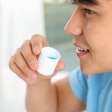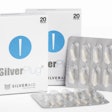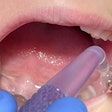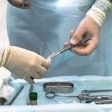
Dental trauma requires prompt treatment to save teeth, yet 20% of emergency department (ED) physicians are not confident treating dental emergencies in children, according to a new study published in Pediatric Emergency Care.
 Matthew Cully, DO, is a pediatric resident at MUSC.
Matthew Cully, DO, is a pediatric resident at MUSC.Researchers used a survey to ask hundreds of pediatric ED physicians about their comfort level treating dental emergencies, as well as their years of experience and whether their site has an on-call or in-house dentist or oral surgeon. The results suggest that more can be done to improve these physicians' knowledge of how to handle dental emergencies (Pediatr Emerg Care, April 24, 2018).
"Dental trauma is a common type of pediatric trauma, and long-term prognosis depends significantly on timely and appropriate management," lead study author Matthew Cully, DO, a pediatric resident at the Medical University of South Carolina (MUSC), told DrBicuspid.com.
Comfort level varies by experience
The number of dental emergencies seen in emergency departments has been increasing for decades, yet ED physicians often lack the knowledge to manage common dental traumas, according to previous research. Dr. Cully experienced this firsthand during a summer rotation at the MUSC pediatric emergency department.
"In a short period of time ... I was involved in the care of several children presenting with dental trauma," he said. "While I felt confident in management of a tooth avulsion, I felt far less confident in the management of many of the other possible dental injuries."
Therefore, Dr. Cully wanted to study whether other pediatric physicians in emergency departments felt the same way as he did. So he sent a survey to a popular listserv for these physicians asking if they were comfortable diagnosing and treating dental trauma and tooth avulsion.
| Confidence treating dental trauma by years of experience | ||||
| Confidene level | 0-5 years | 5-10 years | 10-20 years | > 20 years |
| Confident | 8% | 17% | 22% | 47% |
| Somewhat confident | 58% | 69% | 69% | 39% |
| Not confident | 33% | 5% | 8% | 13% |
Nearly 300 U.S.-based pediatric emergency physicians responded to the survey. About 20% said they were not confident treating dental trauma or replanting an avulsed tooth. Those with more than 20 years of experience were significantly more likely to feel confident treating dental trauma than their younger counterparts, but even 13% of these experienced physicians still did not feel confident treating dental emergencies.
In addition, only 6% of pediatric emergency department physicians sometimes or always used a dental trauma decision-making pathway, a type of flow chart that helps physicians make appropriate treatment choices for their patients. Nevertheless, 90% of physicians were confident or somewhat confident of knowing when to refer dental trauma to a dental professional, and about two-thirds of respondents had an in-house or on-call dentist or oral surgeon for their department.
Can a decision-making pathway help?
The authors listed several shortcomings to their study, including that the survey was not validated and its reliability was not tested. Furthermore, the survey was sent to a single email listserv, so the results may not represent the feelings of all U.S. pediatric emergency physicians.
Nevertheless, the authors believe their survey findings highlight an important problem within pediatric emergency departments and physician training. Dr. Cully and colleagues plan to continue investigating ways to boost physicians' confidence in treating dental emergencies, and a follow-up study will investigate whether decision-making dental traumas pathways can significantly improve physicians' confidence and patient outcomes.
"Our hope is that our decision-making pathway will help provide timely management, improve emergency physician comfort, and enhance outcomes for pediatric patients presenting with a dental trauma," Dr. Cully said.



















